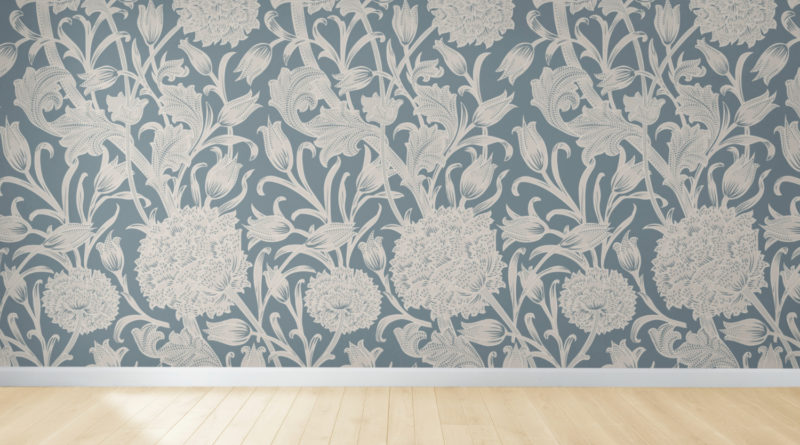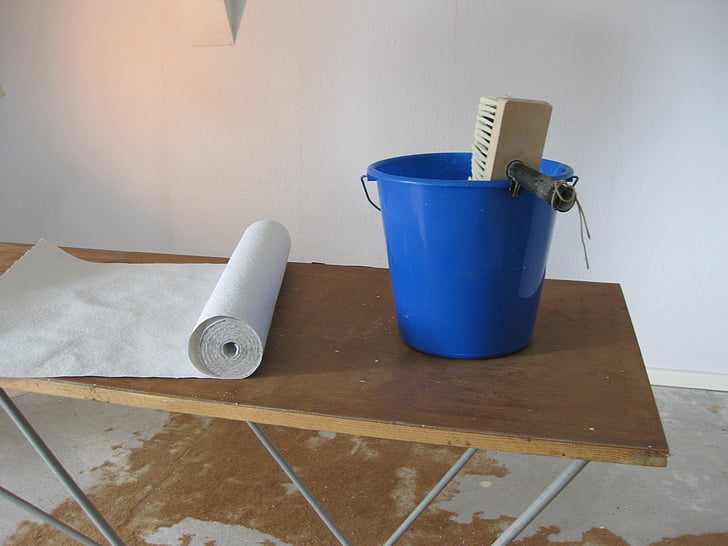How to Dispose of Wallpaper Paste in the UK
In the UK, hanging wallpaper is more than just a design choice; it’s a tradition. But with it comes the challenge of leftover wallpaper paste. Dumping it down the sink? A quick fix that can clog pipes and harm aquatic life. In a nation keen on environmental responsibility, the proper disposal of this adhesive is crucial. This guide offers UK homeowners a clear path to dispose of wallpaper paste without harming their plumbing or the environment. Let’s dive in.
Understanding Wallpaper Paste
Wallpaper paste plays a pivotal role in the UK’s interior decorating landscape. It’s not just about sticking patterns to walls; it’s about ensuring they remain resilient against peels and tears.
- What is it? An adhesive specifically designed to bind wall wallpapers to various surfaces.
- Primary Use: It’s the backbone of every well-wallpapered room, ensuring longevity and durability of the design.
Diving deeper into its composition, many UK brands incorporate ingredients such as starch and methylcellulose. Some even add fungicides for added shelf life. Recognising these components is the first step towards responsible disposal.
Why Proper Disposal Matters
In the realm of home decorating in the UK, wallpaper paste is a silent player with significant implications if mishandled. Here’s why its disposal is more critical than one might think:
- Environmental Concerns: Tossing wallpaper paste carelessly can wreak havoc on our ecosystems. Wet paste, in particular, contains chemicals that, when entering water systems, can be detrimental to aquatic life. Our local waterways, from the serene ponds to bustling rivers, can suffer from chemical imbalances, affecting both flora and fauna.
- Plumbing Nightmares: Beyond the environmental impact, there’s a tangible threat to our homes. Wet paste, if poured down drains, can solidify, leading to stubborn blockages. These aren’t just minor inconveniences; they can escalate into expensive plumbing repairs, disrupting daily life and burning a hole in the pocket.
Diving into the specifics of paste forms:
- Wet Paste: Its fluid nature makes it easy to pour, but that’s where the danger lies. If introduced into plumbing systems, it can settle and harden over time, leading to blockages. Moreover, if it finds its way into natural water sources, the chemicals can harm aquatic ecosystems.
- Dry Paste: While it might seem less harmful due to its completely solid state, disposing of it improperly, like dumping in gardens or open spaces, can lead to it being washed into water systems during rains. Over time, as it breaks down, it can still release harmful chemicals into the soil and water.
Methods of Disposal
Navigating the maze of wallpaper paste disposal in the UK requires a blend of knowledge and responsibility. Here’s a breakdown of the most effective methods:
Diluting and Flushing
This method is particularly suited for liquid paste or those with a more fluid consistency. Most wallpaper pastes are water-soluble.
- Steps to Dilution:
- Slowly pour the leftover liquid waste mixture into a large bucket.
- Gradually add cold water while stirring continuously until the paste reaches a watery consistency.
- Ensure thorough mixing to prevent any lumps or thick residues.
- Where to Dispose:
- Recommended: Use the toilet or outside drains for flushing the diluted paste. These systems are designed to handle larger volumes and are less prone to blockages.
- Avoid: Kitchen and bathroom sinks. These are more susceptible to blockages, and the paste can adhere to pipes, causing long-term issues.
- Applicable Pastes: This method is best for water-based wallpaper pastes or those that are easily dilutable. Always check the product label to ensure it doesn’t contain ingredients that might be harmful when flushed.
Drying and Binning
Ideal for thicker pastes or those that don’t dilute easily.
- Drying Process:
- Spread the paste thinly on a flat surface or tray, preferably in a well-ventilated area.
- Allow it to dry completely. This can take several hours to days, depending on the paste’s consistency and the environment.
- This method demands some elbow grease.
- Disposal: Once the paste is fully dried and hardened, it can be broken into smaller pieces and disposed of in the general waste bin.
- Applicable Pastes: This method is suitable for thicker, non-dilutable pastes or those with a higher concentration of adhesive agents. It’s also a good option for pastes that contain ingredients not recommended for flushing.
Safety Precautions
When dealing with wallpaper paste, safety should never be an afterthought. While these adhesives are designed for home use, they can contain ingredients that, if mishandled, can pose health risks. Here’s what you need to know:
Potential Toxic Ingredients:
- Fungicides: Often added to prolong the shelf life of the paste and prevent mould growth.
- Formaldehyde: Used for its preservative properties, but known to be a respiratory irritant.
- Volatile Organic Compounds (VOCs): These can evaporate into the air, causing indoor air pollution.
- Heavy Metals: Some pastes may contain trace amounts of metals like lead or mercury, especially in older formulations.
- Solvents: Present in some types of paste, they can be harmful if inhaled in large quantities.
Handling and Disposal:
- Gloves: Always wear gloves, preferably nitrile or latex, when handling wallpaper paste to prevent direct skin contact.
- Ventilation: Ensure the room is well-ventilated, especially if you’re working with paste for extended periods. This helps disperse any harmful fumes and reduces the risk of inhalation.
In Case of Accidents:
- Ingestion: If someone accidentally ingests wallpaper paste, do not induce vomiting. Instead, rinse their mouth with water and seek medical attention immediately. Keep the product label or container handy, as it can provide crucial information to healthcare professionals.
- Skin Contact: If the paste comes into contact with the skin, wash the area thoroughly with soap and water. If irritation persists, consult a doctor.
- Eye Contact: If the paste gets into the eyes, rinse them immediately with plenty of water for several minutes. Seek medical advice if irritation continues.
Alternative Uses for Leftover Paste
Rather than discarding that leftover wallpaper paste, why not repurpose it? With a touch of creativity and a dash of practicality, that adhesive can be transformed into a useful tool for various projects:
- Decoupage: This art form involves gluing decorative paper cutouts onto objects, then sealing them with layers of varnish or lacquer. Wallpaper paste can be an excellent adhesive for this, allowing you to beautify furniture, boxes, or even glass items.
- Sizing: Before applying a new layer of wallpaper, a coat of dilute wallpaper paste, known as sizing, can be applied to walls. This helps the wallpaper adhere better and makes future removal easier.
- Craft Projects: Wallpaper paste can be used in various crafts, from paper mâché to creating textured art pieces. Its adhesive properties make it ideal for binding materials together.
- Sealing Envelopes: If you’re into sending handwritten letters, a dab of wallpaper paste can be used to seal envelopes, adding a personal touch.
- Bookbinding: For those who love DIY book projects, wallpaper paste can be used to bind pages together, creating sturdy and unique handmade books.
- Patchwork: Got a small tear in your wallpaper? Mix some leftover paste with a bit of shredded wallpaper to create a patching compound. This can be applied to small damages, seamlessly blending them in.
Storing Leftover Paste:
- Container: Transfer the paste to an airtight container. This prevents it from drying out and extends its shelf life.
- Cool, Dry Place: Store the container in a cool, dry place, away from direct sunlight. Basements or utility rooms are ideal.
- Label: Always label the container with the date and type of paste. This helps you keep track of its age and ensures you use it within its effective period.
- Check Before Use: Before reusing stored paste, check for any signs of mould or an off smell. If present, it’s best to discard the paste.
Conclusion
In the intricate dance of home decorating, wallpaper paste might seem like a mere backdrop. Yet, its proper disposal stands centre stage in ensuring both our homes and environment remain unharmed. As we’ve delved into, the repercussions of careless disposal stretch from clogged pipes to disrupted ecosystems. But with awareness and the right methods, these pitfalls are easily avoidable.
FAQ
Does dry wallpaper paste go off?
Yes, like most adhesives, dry wallpaper paste can lose its effectiveness over time. While it might not “go off” in the traditional sense, its adhesive properties can diminish, making it less effective as a wallpaper adhesive.
Can I put unused wallpaper paste down the sink?
You can do it but it’s not recommended to put unused wallpaper paste down the sink. Doing so can lead to blockages in the plumbing system. If you do decide on such disposal method, make sure to dilute the paste thoroughly and mix it well. Pour down an outside drain or toilet.
Can you put old wallpaper in recycling bin?
Typically, old wallpaper is not recyclable due to the adhesive residues and potential mixed materials. It’s best to dispose of it in normal waste or household rubbish bins.
Is wallpaper paste toxic?
While most wallpaper pastes are designed to be safe for home use, some might contain ingredients that can be harmful if ingested or inhaled in large quantities, such as certain fungicides or solvents. Always check the product label and ensure proper ventilation when working with wallpaper paste.


